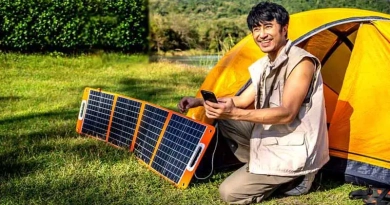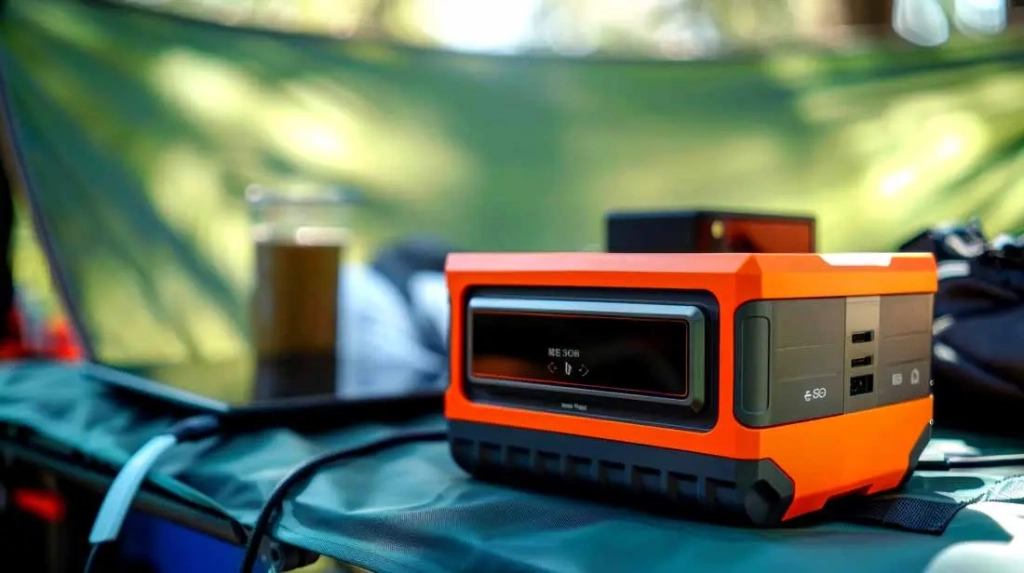
How Do I Keep My Electronics Charged While Camping?
Keeping your electronics charged when camping doesn’t have to be a challenge
The sun had just dropped beyond the horizon, leaving the sky in shades of orange and purple. I sat on a log in my campground, the roaring fire casting dancing shadows around me. The aroma of wood smoke filled the air, and for a moment, I felt fully at ease with the universe. But as I reached for my phone to capture the beauty of the occasion, I was confronted with a painful reality: the battery was low. Suddenly, an urgent concern arose. How can I keep my electronics charged while camping?
Camping has been a regular part of my life, providing me with an opportunity to reconnect with myself in nature. However, the need for electronics—whether for navigation, safety, or simply recording memories—remains critical. I quickly learned that knowing how to charge your devices while camping is essential for any modern camper. As I considered my options, the mysteries of the wide outdoors and the challenges of camping technology were entwined.
 The Challenge of Keeping Electronics Charged
The Challenge of Keeping Electronics Charged
My difficulty stemmed from a simple fact: charging electronics outside might be difficult. While I desired the tranquility of the wilderness, I could not deny the value of my electronics. Over the years, I met a variety of challenges that made keeping my electronics powered seem like a daunting undertaking.
Limited Power Sources
One of the most major issues I encountered was a lack of dependable power sources. Many campgrounds are situated in isolated places, away from electricity outlets. I’ve been in circumstances when the nearest power source was miles away, leaving me wondering how to charge my electronics while camping. Even campgrounds with hookups are unpredictable in terms of availability.
Battery Drain
The fact is that devices drain quickly. Using a smartphone for GPS, snapping endless photos, and streaming music around the campfire all drain the battery. I recall a trip where I spent the entire day hiking, only to discover that my phone had almost no power by the evening. The panic built up, as I considered being lost without a way to return to my campground.
Weather Factors
Nature can be unpredictable. Rainstorms and blazing heat have both had an impact on how efficiently my equipment functioned. Once, an unexpected downpour flooded my backpack, including my portable power bank. The damp gear not only risked my equipment, but it also contributed to the tension of my camping trip.
Choosing the Right Gear
As I explored the world of camping technology, I was confronted with an overwhelming number of alternatives. From solar chargers to portable power banks, the options appeared limitless. However, not all devices are made equal, and I discovered via trial and error what works best in certain situations.
Effective Outdoor Charging Solutions
After overcoming these obstacles, I proceeded to investigate other methods for keeping my electronics charged while camping. Here’s a detailed look at the greatest approaches I uncovered, along with advice on how to use them efficiently.
 1. Portable Power Banks
1. Portable Power Banks
Portable power banks rapidly became my lifeline on camping outings. These small devices store power and can recharge smartphones, cameras, and other electronics on the fly.
How To Use:
Select the Right Capacity: A power bank with at least 10,000 mAh can often charge a smartphone twice or three times. This is especially important for adventure camping, when you will need your devices throughout the day. These power banks come in much higher capacities, including 30,00 and 40,000 mAh units. The nice thing about them is that the size remains the same.
Charge before departure: Always make sure your power bank is completely charged before leaving the house. I learned this the hard way when I arrived at a campsite and discovered that my power bank was barely half full.
Keep it accessible: Place the power bank in a side pocket of your backpack so you can immediately access it when needed.
 2. Solar chargers.
2. Solar chargers.
Solar energy has proven to be one of the most efficient camping power sources. These panels can give a consistent stream of power, allowing you to charge your electronics throughout the day while you enjoy the sunshine.
How To Use:
Choose Quality Gear: Look for solar chargers with many panels and built-in batteries. This assures optimal efficiency, even on partly overcast days.
Positioning is important. Place the solar charger flat and toward the sun during the day. I frequently place it on my tent or backpack to get as much sunlight as possible.
Monitor Charging Progress: Many solar chargers include LED indicators that show the charging level, making it simple to monitor how much power is being generated.

If you’re camping with a car, the car might be a great place to charge your electronics. This strategy is very handy on long trips.
How To Use:
Use an Inverter: Purchase a car inverter that plugs into the cigarette lighter and allows you to charge many devices simultaneously. This has saved my life several times.
Power Management: Be cautious about exhausting your car’s battery. To avoid being stuck with a dead battery, I always monitor my usage and attempt to run the engine on a regular basis.
 4. Generator Power
4. Generator Power
A portable generator can give dependable electricity to individuals that emphasize comfort and have plenty of room for equipment.
How To Use:
Choose a Quiet Model: Look for lightweight and quiet generators, as noise might disturb the tranquil ambiance of camping.
Always use surge protectors when connecting equipment to avoid power surges that could damage your gadgets.
 5. Hand crank chargers.
5. Hand crank chargers.
In a pinch, hand crank chargers can provide a low-tech answer to the problem of keeping my electronics charged. These chargers involve some physical effort, but they can produce enough power for a rapid charge.
How To Use:
Pack it in your emergency kit. Keep a hand crank charger with your emergency supplies. I’ve found it to be really beneficial in unexpected situations.
Crank away: A few minutes of cranking can supply just enough power to send a message or place a phone call.
 6. Battery-powered devices
6. Battery-powered devices
Switching to battery-powered devices can also make charging easier. Many electronics now operate on AA or AAA batteries, which are easily replaced.
How To Use:
Invest in rechargeable batteries: This eliminates waste and allows you to keep your devices powered without requiring external charging.
Carry extras: Always include a few additional batteries to avoid being caught off guard.
Resources and Tools Required
To efficiently deploy these solutions, I recommend the following tools and resources:
Portable Power Banks: Look for devices with a high mAh capacity and various connectors for convenience.
Solar Chargers: To maximize efficiency, select durable versions with high solar conversion rates.
Select a car inverter with several outlets so that you may charge multiple gadgets at once.
Portable Generator: Make sure it is lightweight, quiet, and fits your power requirements.
Hand Crank Charger: A tiny type is ideal for emergencies and can save lives.
Rechargeable Batteries: Stock up on trusted brands for a variety of gadgets to ensure you always have power.
Camping Gear: Use high-quality tents, tarps, and storage bags to protect your goods from the elements.
 Reflecting on my experiences with keeping my electronics charged while camping, I’ve realized that a little forethought can go a long way. The question is, how can I keep my electronics charged while camping? It doesn’t have to be intimidating. The solution is to comprehend the available resources and choose the appropriate equipment to satisfy your needs.
Reflecting on my experiences with keeping my electronics charged while camping, I’ve realized that a little forethought can go a long way. The question is, how can I keep my electronics charged while camping? It doesn’t have to be intimidating. The solution is to comprehend the available resources and choose the appropriate equipment to satisfy your needs.
There are numerous practical ways to keep your electronics charged, including using portable power banks, collecting solar energy, and tapping into your vehicle’s battery. As I sit by the campfire, listening to the sounds of the night and feeling at peace, I realize that keeping connected to nature and my loved ones does not have to be difficult.
So, the next time you find yourself looking at the stars with your phone in hand, remember that with the correct gear and a little planning, you can enjoy every second of your vacation without worrying about a flat battery. Enjoy the thrill of adventure camping while knowing you’re prepared to handle whatever comes your way!

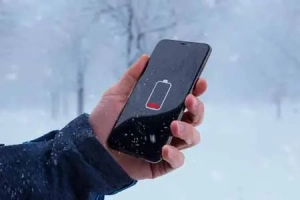 The Challenge of Keeping Electronics Charged
The Challenge of Keeping Electronics Charged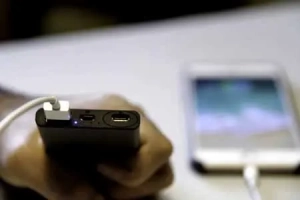 1. Portable Power Banks
1. Portable Power Banks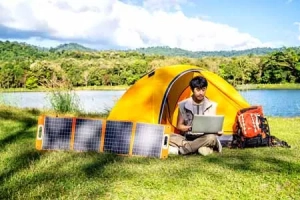 2. Solar chargers.
2. Solar chargers. 4. Generator Power
4. Generator Power 5. Hand crank chargers.
5. Hand crank chargers.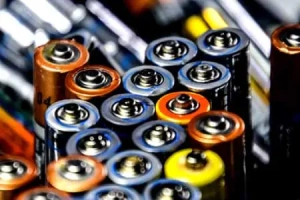 6. Battery-powered devices
6. Battery-powered devices

